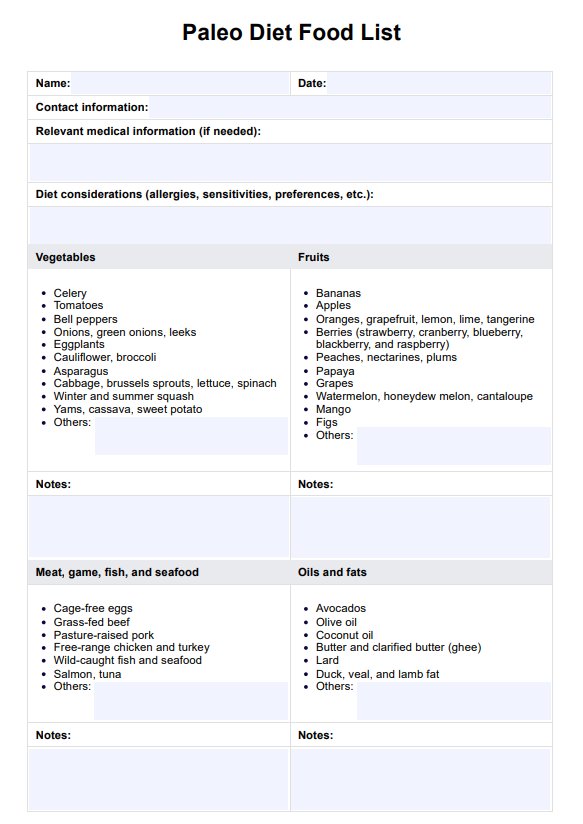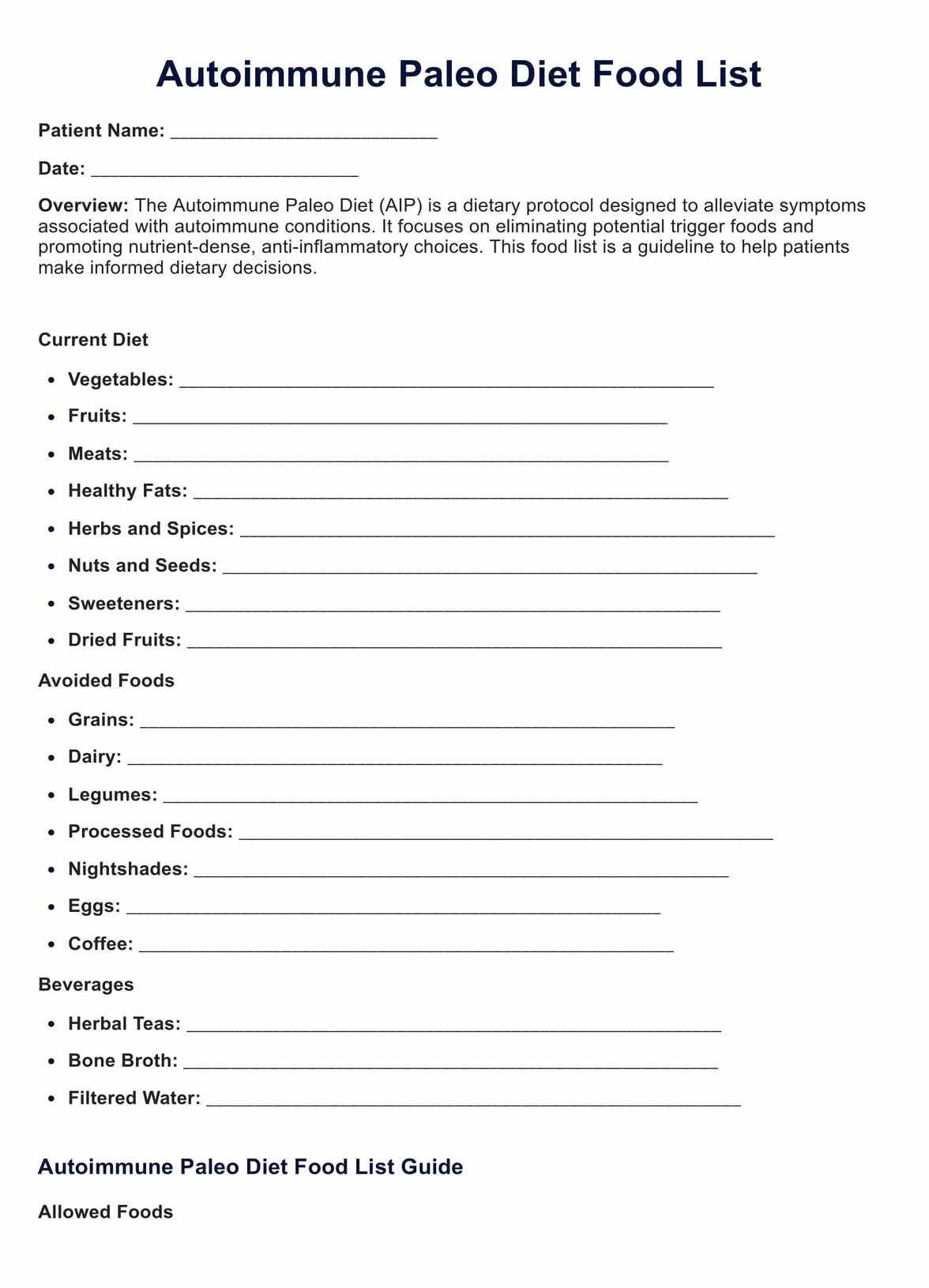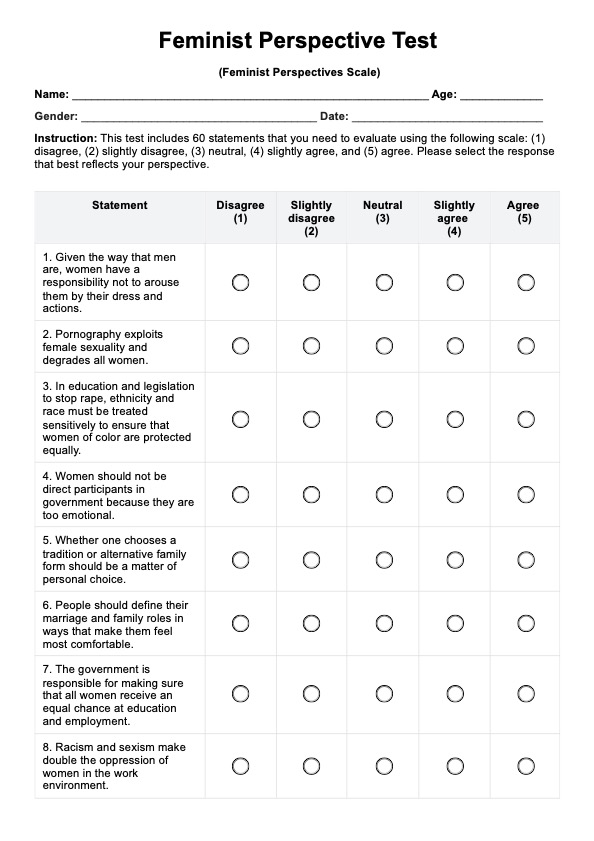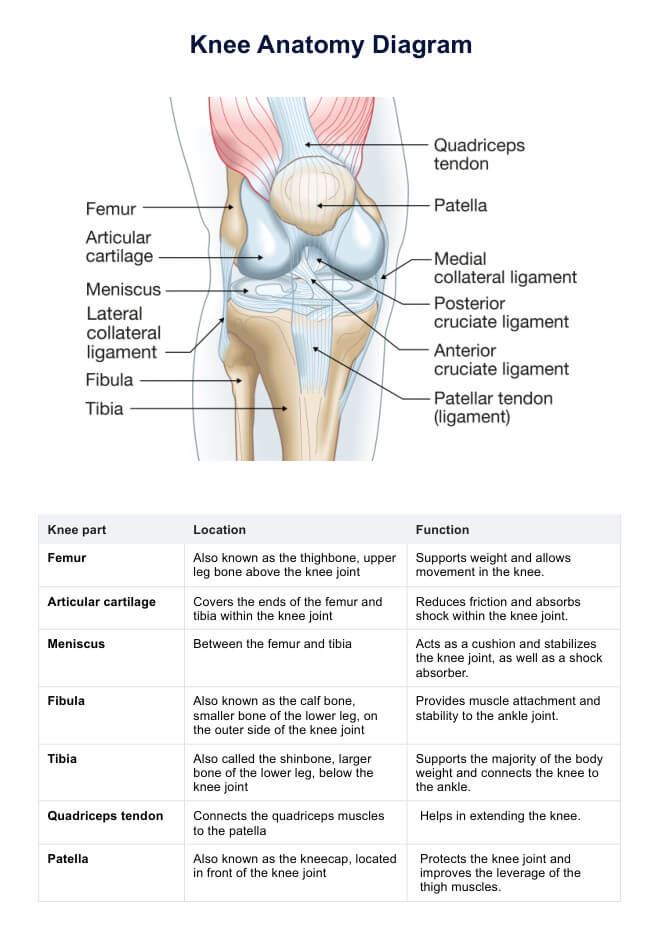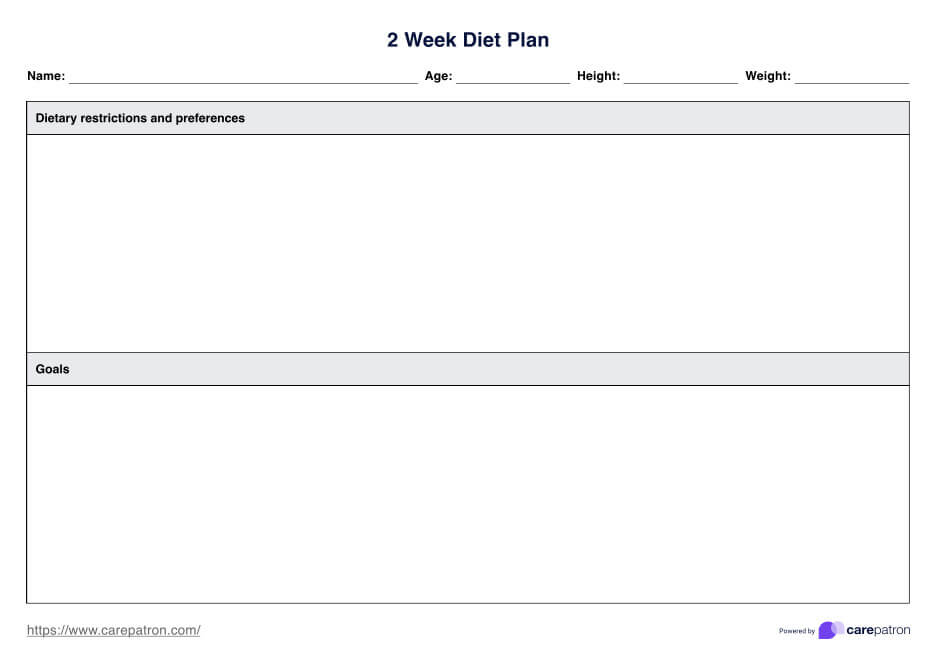Paleo Diet Food
Wondering how the Paleo Diet can enhance patient outcomes? Explore this comprehensive Paleo Diet Food List. Revolutionize dietary recommendations now!


What is a paleo diet?
The Paleo Diet Plan, short for the paleolithic diet and also known as the Stone Age diet, is a dietary approach based on foods presumed to have been consumed during the paleolithic era, which dates back about 2.5 million to 10,000 years ago. The paleo diet menu primarily consists of foods that could be hunted, fished, or gathered, mimicking the diet of our ancient ancestors.
The fundamental principle behind the paleo diet is to focus on unprocessed, whole foods while excluding modern, processed items such as refined sugar, grains, and dairy. The emphasis is on lean proteins like grass-fed meats, fish, eggs, nuts, seeds, fruits, and vegetables. These food groups provide a rich array of nutrients while avoiding processed foods that can contribute to inflammation, weight gain, and various health issues.
Paleo Diet Food Template
Paleo Diet Food Example
What is a Paleo Diet Food List?
A Paleo Food List is a foundational guide delineating permissible and restricted food items within the paleo framework that can be a resource when creating a meal plan. The list encompasses an array of nutrient-dense options commonly considered in a traditional paleo diet, including grass-fed meats, wild-caught fish, fresh vegetables, fruits, nuts, and healthy oils. Individuals aim to optimize their nutrient intake by adhering to this list, focusing on foods our ancestors could hunt or gather.
The Paleo Diet Food List for weight loss emphasizes whole foods rich in essential nutrients, promoting increased energy and improved workout performance. Adherents strive to reduce the risk of modern-day ailments by excluding processed foods and emphasizing natural sources. The comprehensive food list provides clarity, making it easier for individuals to plan meals that align with paleo principles, fostering a sustainable and health-focused dietary approach.
How does our template work?
Here is a guide on using the Printable Paleo Food List template:
Step 1: Fill out client information
Begin by instructing clients to fill in their name, date, and email. This establishes a personalized framework for the paleo meal plan, crucial for effective dietary guidance and monitoring.
Step 2: Choose from a nutrient-dense selection
Encourage clients to choose from the comprehensive list, emphasizing the importance of including grass-fed meats, wild-caught fish, and various fresh vegetables and fruits such as sweet potatoes, pumpkin seeds, eggs, mushrooms, lean meat, coconut oil, etc.
Step 3: Addressing gray-area foods
Discuss the gray-area foods like dairy and specific fruits and vegetables. Guide clients in making informed choices based on individual health needs. This is especially crucial when the patient opts for vaguely acceptable food like leftover roast chicken or dairy alternatives such as coconut milk. By doing so, you're aiding patients in fostering adaptability within the paleo framework while respecting dietary restrictions.
Step 4: Individualized notes
Emphasize the significance of the additional notes section for clients to communicate allergies or specific considerations, such as providing only a 14-day paleo meal plan to try out the diet simply. This personalized touch allows for a more tailored approach, acknowledging that healthcare professionals play a vital role in ensuring a balanced and sustainable paleo lifestyle.
When would you use this Paleo Food List?
This comprehensive Paleo Diet Food List is helpful for a spectrum of health practitioners and individuals seeking a wellness transformation. Dietitians and nutritionists can recommend this list to patients aiming to:
- Create personalized meal plans: With the food list, nutritionists can better craft customized meal plans aligned with the paleo diet. You can use the Meal Plan Template to organize and optimize dietary choices for your clients.
- Manage their weight: Dietitians can use the food list as a reference when setting paleo diet guidelines for weight management patients aiming to maintain or lose weight.
- Improve energy and health outcomes: Healthcare providers can incorporate the resource to complement dietary recommendations for individuals seeking to improve health markers like cholesterol levels, blood pressure, and blood sugar or manage conditions like obesity, heart disease, or type 2 diabetes.
- Enhancing nutritional understanding: Healthcare professionals can utilize it as an educational resource for clients to learn more about healthy eating, which can lead to a desire to transition to a healthier eating pattern.
To summarize, healthcare practitioners and wellness professionals can effectively employ the Paleo Diet Plan in numerous scenarios to support their clients' health objectives and dietary needs. This resource proves beneficial when individuals seek guidance in embracing a whole-food, unprocessed dietary approach.
Common Paleo Diet results
Paleo eating or following often yields health benefits and transformative results that resonate with various health goals. Common results and their meanings often observed when adhering to this dietary approach are:
- Weight loss: Individuals frequently report weight loss, attributing it to the diet's focus on whole, unprocessed foods and reduced sugar intake.
- Improved energy levels: Improved energy levels and enhanced workout performance are common outcomes, reflecting the diet's emphasis on nutrient-dense options and lean proteins.
- Stabilized blood sugar levels: This is crucial for those managing diabetes or seeking sustained energy throughout the day.
- Enhanced digestion and increased satiety: Increased fiber intake from fruits, vegetables, and nuts can positively impact gut health and increase the feeling of fullness.
- Potential reduction in inflammation: Some individuals report decreased inflammatory symptoms such as joint pain or skin conditions. The anti-inflammatory nature of whole, unprocessed foods could contribute to this result.
The Free Paleo Diet Food List facilitates these positive outcomes by offering a structured guide to permissible foods, aiding adherence to the diet's principles. Users can easily navigate through categories such as vegetables, fruits, meats, and healthy fats, ensuring a well-rounded and satisfying meal plan.
References
Frączek, B., Pięta, A., Burda, A., Mazur-Kurach, P., & Tyrała, F. (2021). Paleolithic diet—effect on the health status and performance of athletes? Nutrients, 13(3), 1019. https://doi.org/10.3390/nu13031019
Commonly asked questions
The lists make following the Paleo lifestyle easier. They help people choose foods that fit their diet, simplifying grocery shopping and meal planning.
These are regularly used for planning meals and shopping. They guide the selection of foods that meet Paleo principles, emphasizing whole and unprocessed options.
Refer to the food lists as a guide for choosing foods aligned with the diet. They're crucial for meal planning, ensuring adherence to Paleo principles by avoiding grains, legumes, processed foods, and dairy.
The length varies, but a comprehensive Paleo Diet Food List covers vegetables, fruits, meats, fats, nuts, and seeds. It's designed to offer flexibility for creating diverse and balanced Paleo meals.


